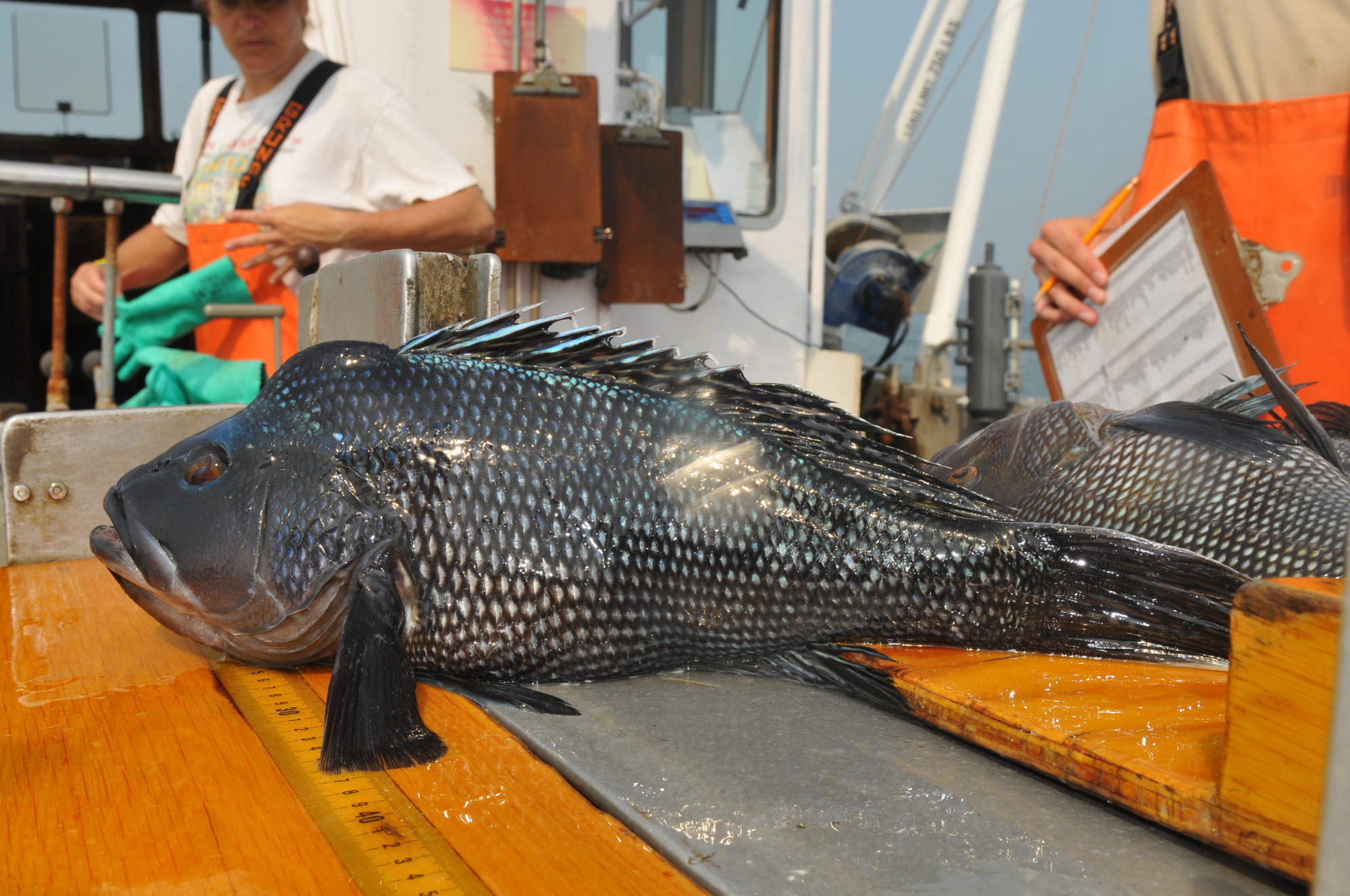
The Long Island Sound Study (LISS) tracks a set of Ecosystem Indicators to measure the health of the Long Island Sound. A critically important indicator LISS tracks is game fish abundance, which is a reflection of the productivity of Long Island Sound and effectiveness of coast-wide fishery management plans that seek to stabilize populations while maximizing both recreational and commercial harvest opportunities. To track these abundances, Connecticut Department of Energy and Environmental Protection (CT DEEP) conducts the Long Island Sound Trawl Survey annually, in the spring and fall, since 1984. The LISS reports on various important game fish species, including bluefish (Pomatomus saltatrix), scup (Stenotomus chrysops), striped bass (Roccus saxatilis), summer flounder or fluke (Paralichthys dentatus), tautog or blackfish (Tautogo onitis), weakfish (Cynoscion regalis), and winter flounder (Pseudopleuronetes americanus). Most recently, LISS has added a new game fish species – black sea bass (Centropristis striata).
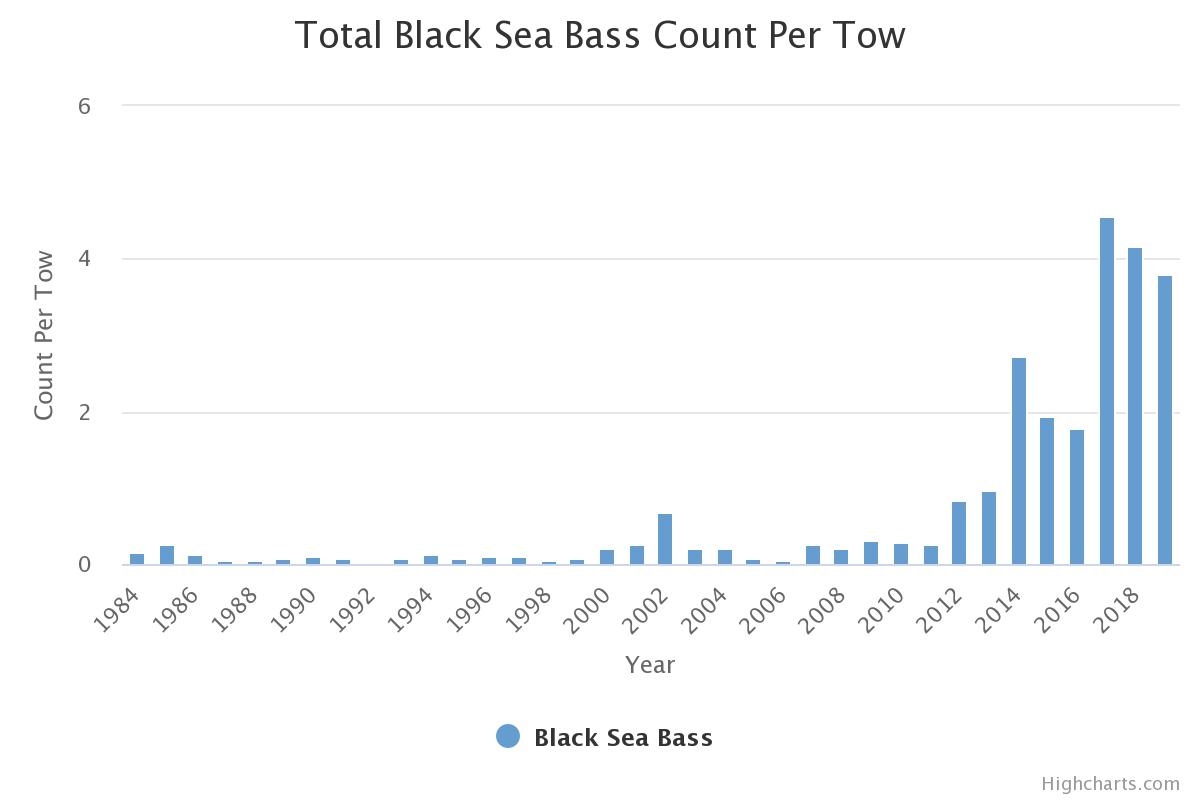
In the last decade, black sea bass abundance has increased by 1,084 percent in the Long Island Sound Trawl Survey. Historically, the species’ distribution is located along the Atlantic coast from Cape Cod to the Gulf of Mexico and are typically found near structured habitats, such as rocky bottom areas, reefs, wrecks, jetties, and other hard structures. Their prey consists of crustaceans (clams, mussels, and crabs) and other smaller fish; while their predators include bluefish, weakfish, striped bass, and sharks.
Black sea bass are classified as a warm water species, meaning the species is more tolerant of warmer temperatures compared to colder. More specifically, these species prefer water temperatures of 11-22°C or 50-72°F. Additionally, black sea bass are known to spawn between January to July. Because of their temperature adaptation and breeding history, the species are typically more abundant south of the Sound, rather than northern New England regions.
However, recent data shows that black sea bass may be experiencing a geographic range shift, or expansion, northward. The Atlantic States Marine Fisheries Commission has reported that the commercial and recreational landings (catches of marine fish) have increased, as well as the spawning stock biomass. These increases indicate that the black sea bass stock abundance is increasing, in which causes the species to search elsewhere to occupy open niches – like in Long Island Sound. However, another reason for the recent increase in abundance in the Sound may be driven by rising water temperatures. Like black sea bass abundance, water temperatures, both surface and bottom, have increased in the Sound within the last decade. This correlation is not only observed in black sea bass, but also overall warm water fish species – including 38 species, such as, striped bass and summer flounder. Warm water species are typically more abundant in the fall, while cold water species are more abundant in the spring. However, within the last decade, warm water species are now increasingly dominant in both the spring and fall seasons, and coincidentally there is a decrease in abundance of cold water species in both seasons.
This is not necessarily a negative implication as the black sea bass are an important commercial and recreational fishery species, however their increase poses negative cascading effects on the food web. For example, the American lobster population has been dramatically decreasing potentially due increased summer water temperatures in the Sound, as American lobsters cannot maintain their metabolisms in waters above 20°C. The increase in sea bass abundance expedites this decline as American lobster is a species of prey. It is important to recognize this predator-prey relationship in future management practices as other fishery species may be impacted by temperature-induced geographic range shifts.
The black sea bass indicator is included in the set of game fish, or sport fish, indicators in the Thriving Habitats and Wildlife section of the indicators presentation.
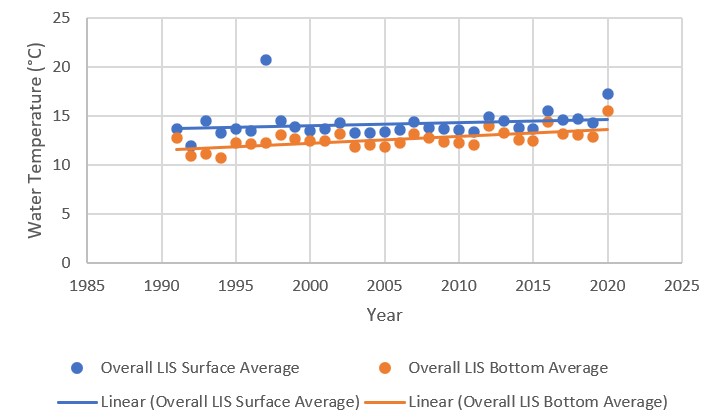
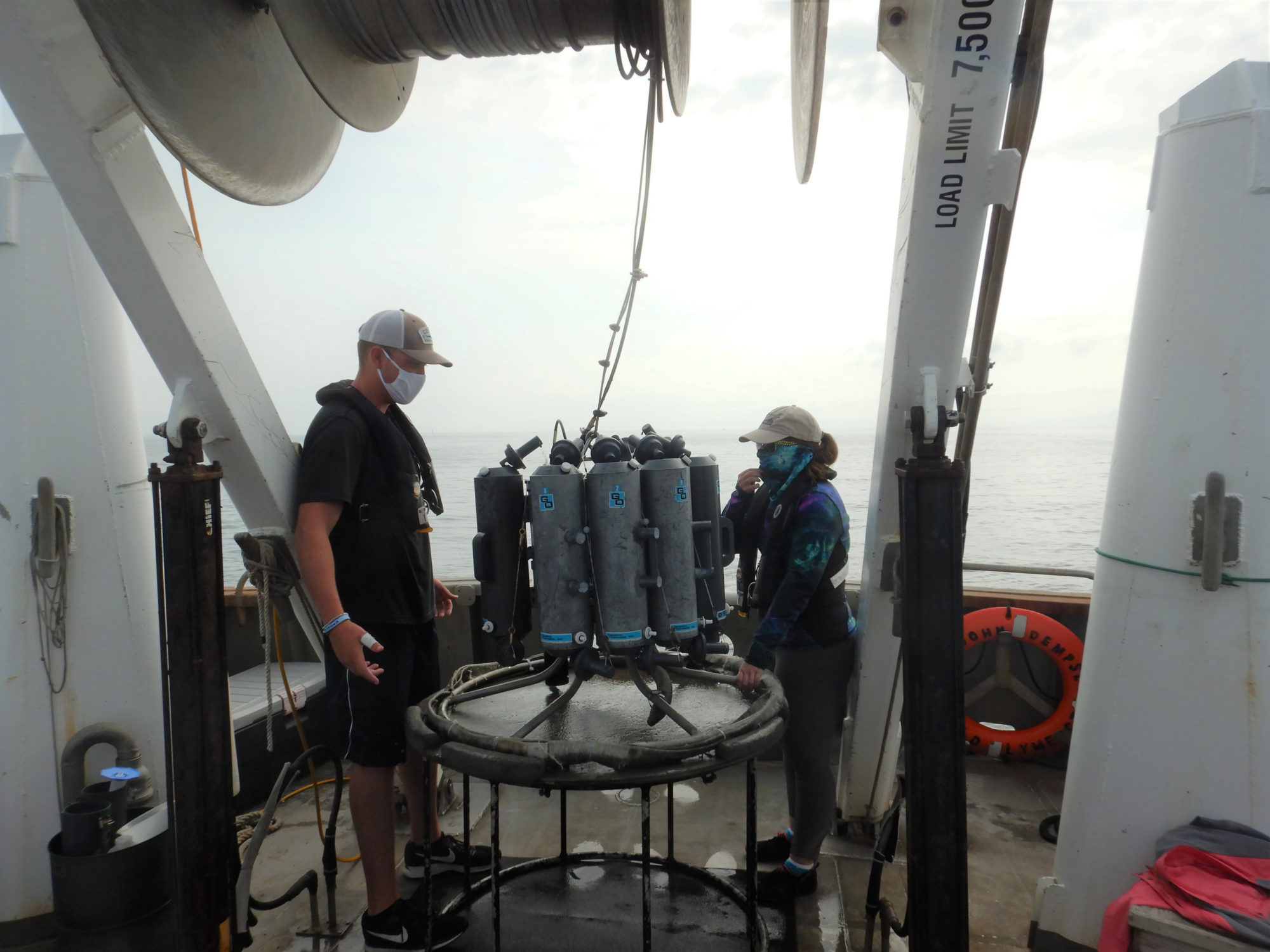
Despite the pandemic, the Connecticut Department of Energy and Environmental Protection and the Interstate Environmental Commission completed their 30th consecutive season of summer water quality monitoring in Long Island Sound in 2020. The water samples collected and analyzed by CT DEEP and IEC showed a reduction in the maximum area of hypoxic (or oxygen-depleted) water in the bottom waters of Long Island Sound from the previous season, a key indicator in tracking water quality in Long Island Sound.
The total area of hypoxic waters was 63 square miles compared to 89 square miles from 2019. Strong wind events, including from Hurricane Isaias, in late July and early August, likely contributed to the reduction. Strong winds from the east in the summer can help mix the bottom waters with the more oxygen-rich surface waters to improve oxygen levels in the bottom.
Hypoxia occurs in coastal waters when the bottom waters lack sufficient oxygen (3 mg/Liter of dissolved oxygen or less) to support marine life. Often called a “dead zone,” the area of hypoxic water is an important water quality indicator. It usually occurs in the summer in bottom waters when the more oxygenated surface waters heat up and become less dense, making it harder for surface waters to mix with the denser, less oxygenated bottom layers.

Despite the decrease, the five-year rolling average in the hypoxic area, LISS’s standard to measuring long term progress, increased slightly from 89 square miles in 2019 (the average of the years 2015-2019) to 94 square miles in 2020 (the average of the years 2016-2020). More important, however, the long-term trend for reducing hypoxia continues to show a significant improvement. The current five-year average of the hypoxic area represents a 61 percent decline from 1992-1996 when the average hypoxic area was 240 square miles, a period in which nearly 20 percent of the Sound suffered from hypoxic conditions.
In assessing trends, LISS uses the five-year rolling average because conditions in any given year could be impacted by varied factors, such as extreme patterns of heat or precipitation.
The summer sampling is part of the year-round Long Island Sound Water Quality Monitoring Survey, which is funded by the Long Island Sound Study. The program has been in effect since the 1980s to help track a major goal of LISS to reduce the area and severity of hypoxia in the bottom waters. As part of this effort EPA and the states of Connecticut and New York, working with municipalities, are implementing a program to reduce nitrogen, a nutrient that in excess leads to the conditions that result in hypoxia.
CT DEEP and IEC took over the water quality monitoring program in 1991. As a result of the pandemic, both CT DEEP and IEC canceled its vessel-based monitoring programs in April and May. They resumed in June with reduced crews in order to maintain social distancing and masking practices. Hypoxia was first detected on July 7 and last detected on Sept. 10. The duration of hypoxia, which is calculated from samples taken at three water quality monitoring stations, lasted 43 days. It did not include the period between Aug. 16 and Sept. 7 when oxygen levels at the three stations, which are located in the western-most part of the Sound, were greater than 3.0 mg/L.
More information about efforts to improve water quality in the Sound is available in the Extent of Hypoxia and the Nitrogen Loading Ecosystem Targets on the LISS website.
Winter is Sugar Kelp Season!
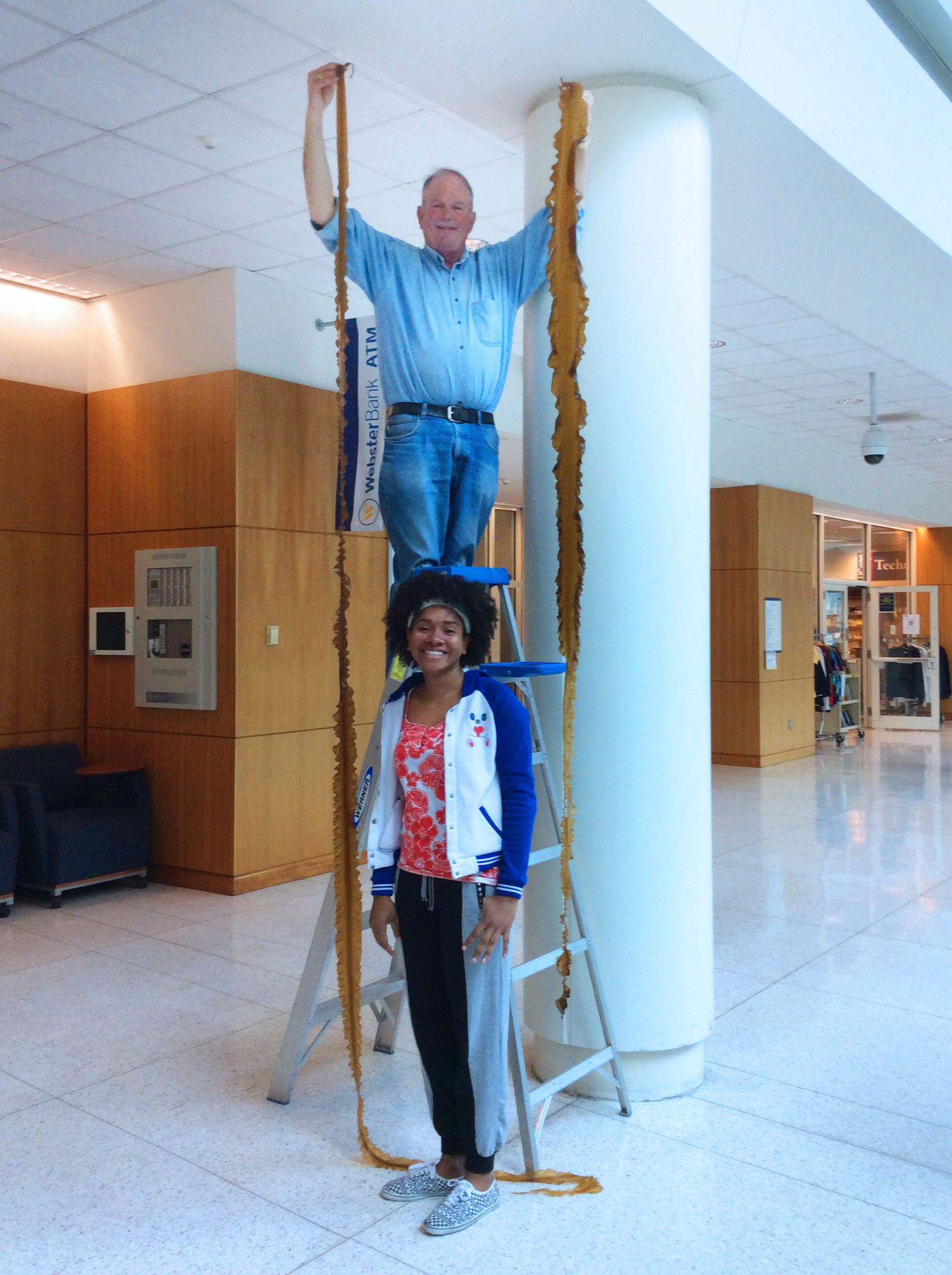
Sugar Kelp, Saccharina latissima, is a brown-colored seaweed that thrives in cold waters in Long Island Sound and other areas of the northeast. Aquaculture farmers seed juvenile kelp on long lines attached to buoys or docks in November and December, and then wait until spring to harvest the fast growing kelp crop. Dr. Charles Yarish, an emeritus professor at the University of Connecticut, said that farm-cultured kelp he has harvested for research in Long Island Sound has grown to as long as 8 meters (26.2 feet). Wild kelp also grows naturally to as long as seven meters (23 feet) in Long Island Sound.
Dr. Yarish noted that in the 1980s he had harvested kelp that grew to as much as 12 meters (39.4 feet), but over the past couple of decades the growing season has shortened as Long Island Sound waters have gotten warmer.
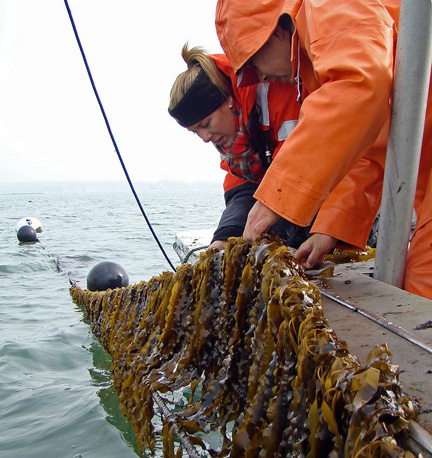
Nine years ago, a UCONN research team funded by LISS and led by Dr. Yarish investigated whether kelp can be used in the Sound to help improve water quality by reducing nutrient pollution. Kelp needs nutrients such as nitrogen to grow, but nitrogen also fuels the growth of microscopic algae, which in excess can lead to a severe drop in oxygen levels in coastal waters. In turn, severely depleted oxygen levels can harm wildlife, including inducing massive fish kills. At three farm sites in the nearshore waters off the Thimble Islands (Branford, CT), Bridgeport and Fairfield, CT, and at the mouth of the Bronx River, Yarish’s research team demonstrated that a significant amount of nitrogen is removed from the Sound when aquacultured kelp is harvested.
In recent years, LISS has continued to support these and other pilot projects—known as nutrient bioextraction—on Long Island, in the Bronx, and in the Greenwich/Stamford areas of Connecticut. You can learn about these projects in the nutrient bioextraction section of the LISS website.
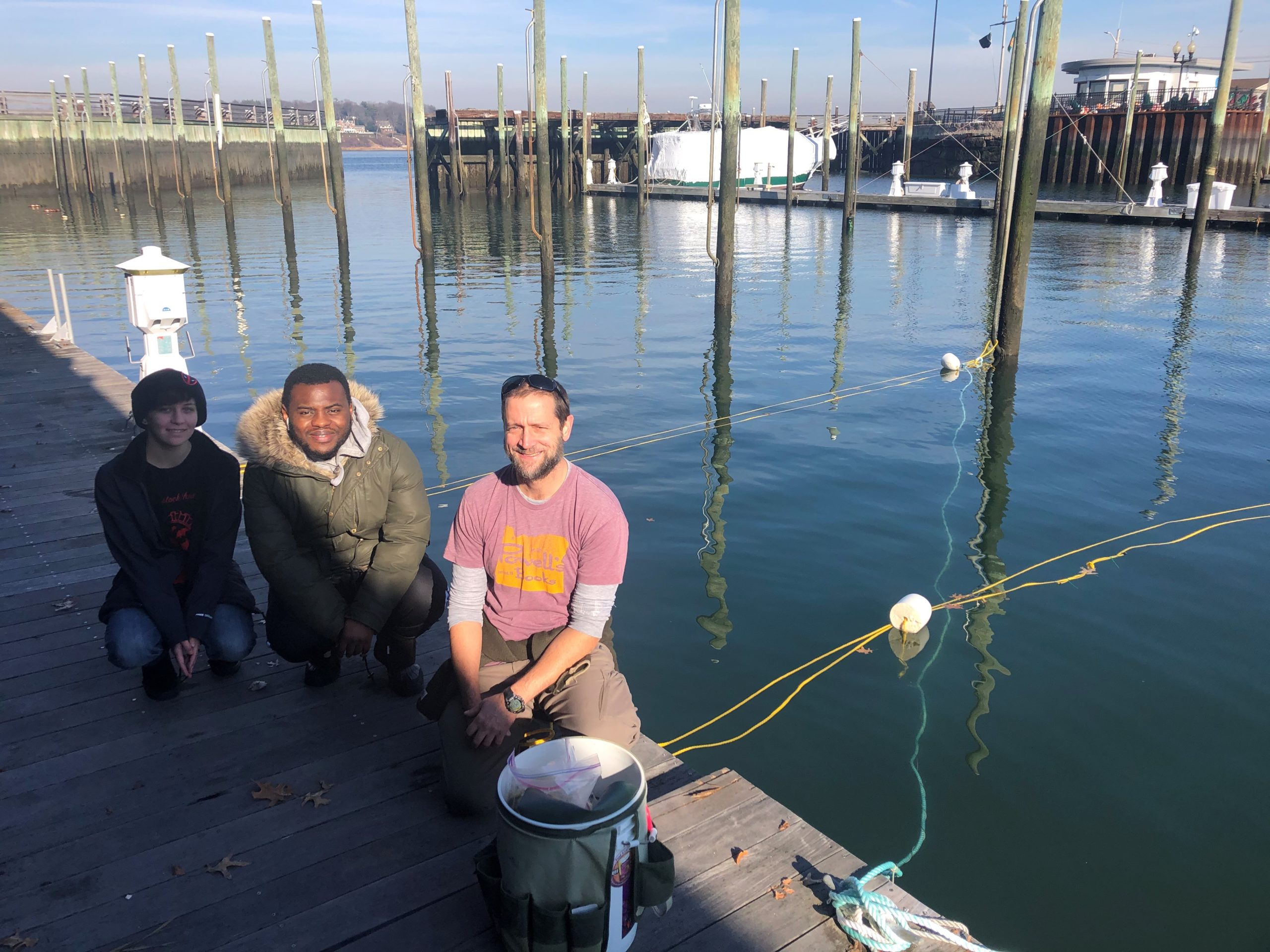
Besides the ecological benefits, kelp has many potential economic benefits as well, although it remains a challenge to develop markets for the kelp as a crop. Kelp is an excellent dietary source of fiber, vitamin C, vitamin K, iron, calcium, magnesium, iodine, and other trace minerals; it can be used dried, powdered, fresh, cooked, and fresh frozen (source: CT Department of Aquaculture). In New York, where kelp is not yet permitted to be harvested for food, pilot projects are looking at alternative uses, including extracting kelp for fertilizer. Dr. Yarish is also part of national research projects with the US Department of Energy developing a selective breeding program and scalable aquaculture of sugar kelp as well as looking into the viability of using kelp biomass as a biofuel and in other applications for food and feeds. With another one of his former post-doctoral students, Dr. Schery Umanzor, Dr. Yarish is looking at the capacity of nutrient bioextraction by kelp farms at farms in the Northeast and the Pacific Northwest of the US.
Learn More:
Other Links:
- New bioextraction pilot projects in Connecticut and Long Island waters (LISS)
- Nutrient Bioextraction: Extracting Pollution from the Sound (LISS)
- Cultivation of kelp in Connecticut (CT Department of Agriculture/Bureau of Aquaculture)
- CT Sea Grant leads project designed to spur the seaweed industry (Greenwich Time)
- Macroalgae research inspiring novel energy resources (US Department of Energy Mariner Program)
- Growing a better seaweed to fuel the future (Phys.Org)
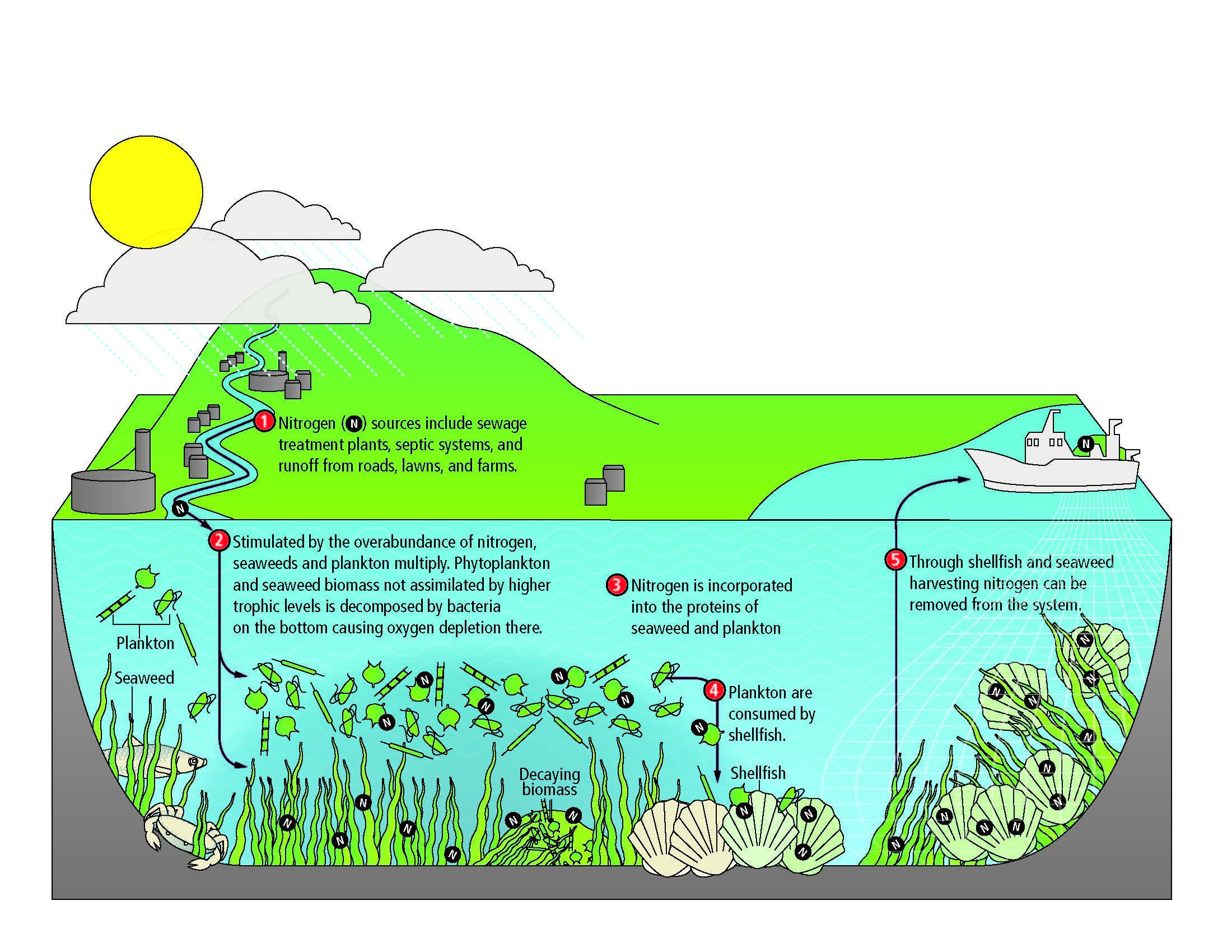
Updated January 2021
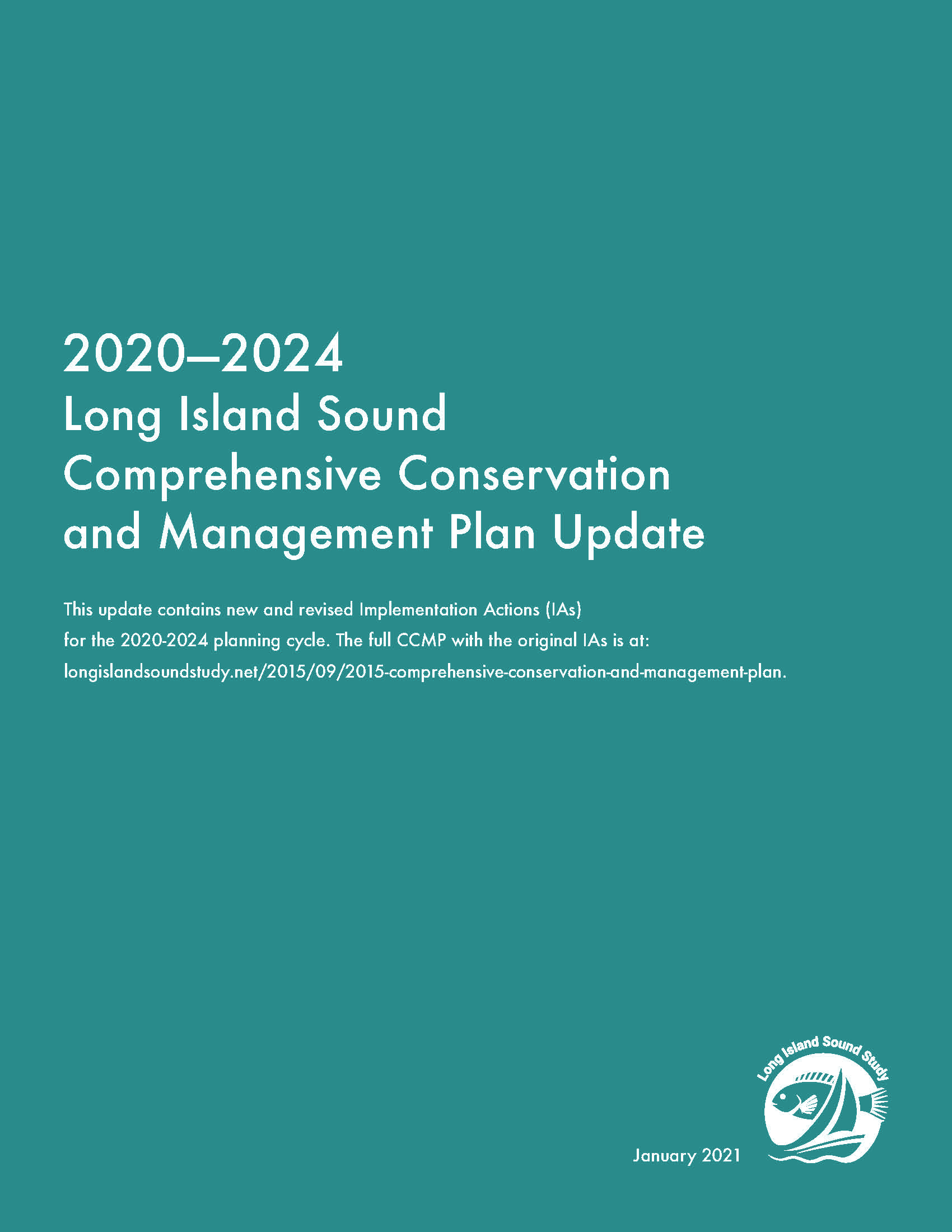
This update contains new and revised Implementation Actions (IAs) for the 2020-2024 planning cycle of the Long Island Sound Comprehensive Conservation and Management Plan (2015). View the IAs in connection to the CCMP’s goals, objectives, outcomes, and strategies in the following summary document:
The IAs also are fully described in the following technical supplemental documents to the CCMP under four themes:
- Clean Waters and Healthy Watersheds
- Thriving Habitats and Abundant Wildlife
- Sustainable and Resilient Communities
- Sound Science and Inclusive Management
The Implementation Actions that were drafted for 2015-2019 can be found in the following documents:
The full CCMP is also posted in the media center.
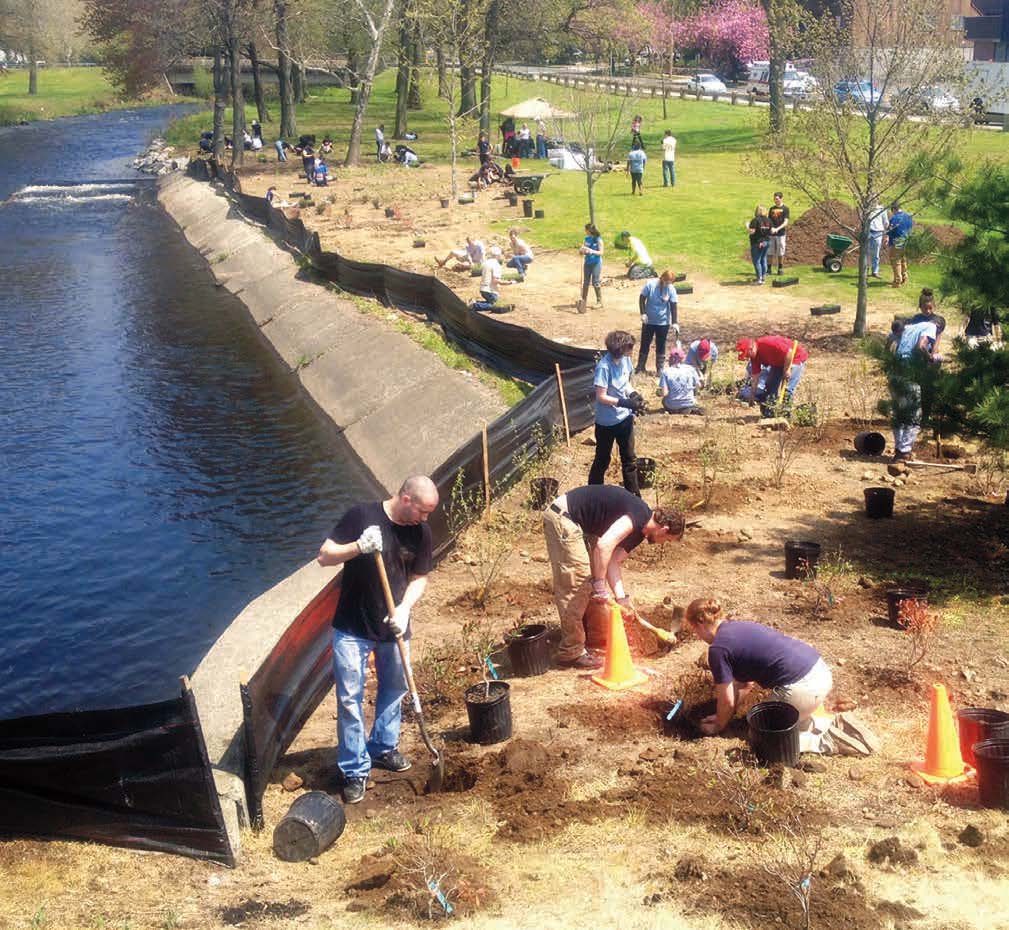
What program has helped to add 105 river miles for fish passage, restore 773 acres of critical fish and wildlife habitat, treat 200 million gallons of pollution, and educate and engage three million people about Long Island Sound restoration efforts over the past 15 years?
The answer is the Long Island Sound Futures Futures Fund. The Long Island Sound Study created the annual competitive grant program in 2005 with management support from the National Fish and Wildlife Foundation. It provides support to local organizations, municipalities, and universities to develop environmental projects that help to fulfill the objectives of the Long Island Sound Comprehensive and Conservation Management Plan to restore and project the Sound. Recently, NFWF published a report highlighting some of the best projects over the past 15 years. The descriptions include photographs that illustrate how these actions have provided a healthier environment for the millions of people who live around the Sound.
The report is available on the LISS media center website.
In December, NFWF and LISS also announced the largest grant award in the history of the program – $3.8 million for 38 grants. Descriptions of the 2020-funded projects, which will be implemented this year, are available on the LISS grants page.
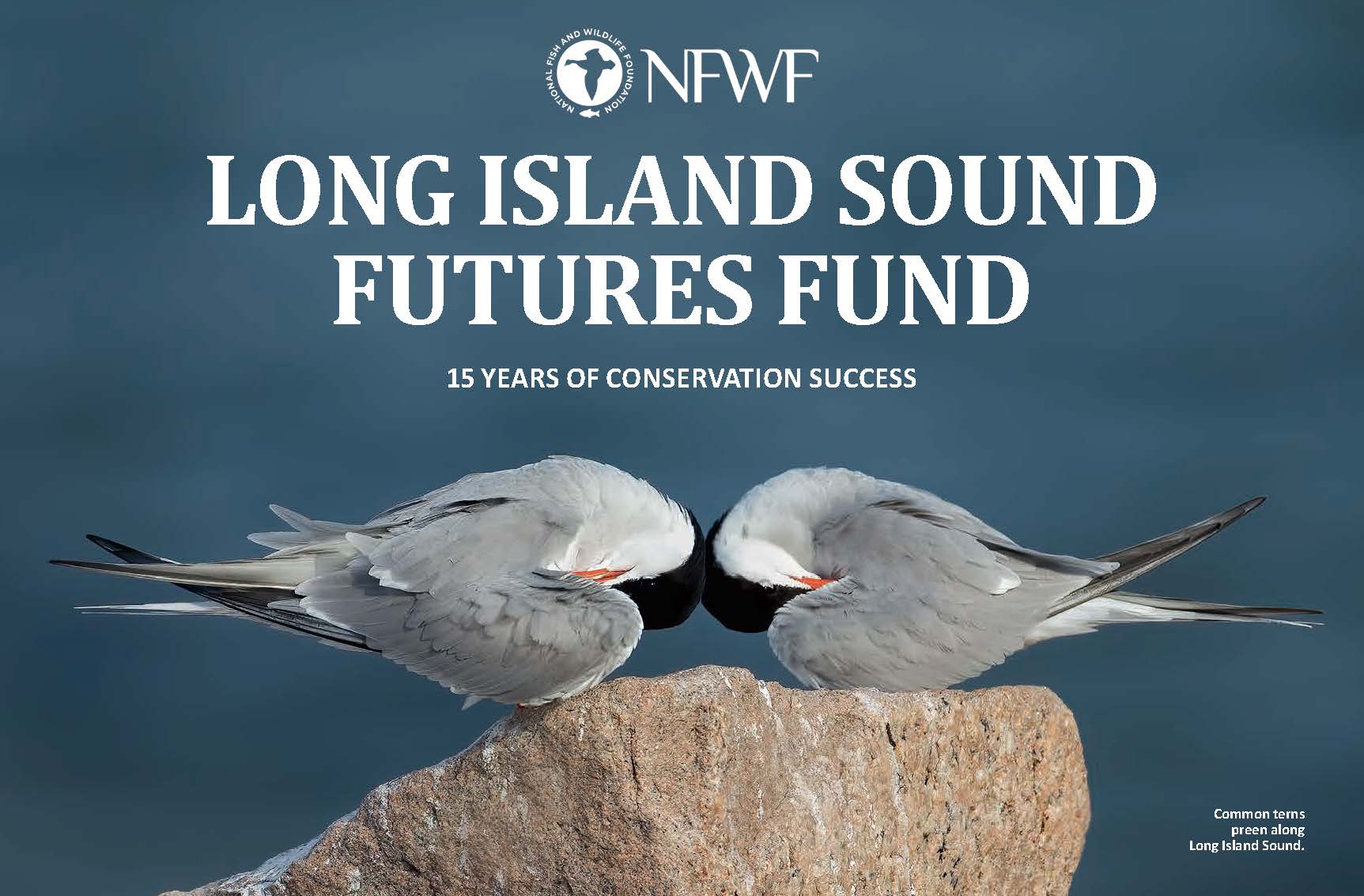
The report, published by the National Fish and Wildlife Foundation, highlights the grant program that is used by local NGOs, municipalities, and academic institutions to help implement the Long Island Sound Comprehensive Conservation and Management Plan. It is available as a PDF download.
Partnership Celebrates 15 years of Conservation Success Around the Sound
NEWS RELEASE
FOR IMMEDIATE RELEASE: Dec 7, 2020
CONTACTS:
- Mike Smith, w/NFWF, 703-623-3834
- John Senn, U.S. EPA Region 1 (New England), 617-918-1019, Senn.John@epa.gov
- Stephan McBay, U.S. EPA Region 2, 212-637-3672, McBay.Stephan@epa.gov
Long Island Sound Watershed, New York (December 7, 2020) – Today, top federal and state environmental officials from New England and New York announced 38 grants totaling $3.8 million to local government, nongovernmental organizations, and community groups to improve the health and ecosystem of Long Island Sound.
Work funded through the Long Island Sound Futures Fund (LISFF) has shown how projects led by local groups and communities make a big difference in improving water quality and restoring habitat around the Long Island Sound watershed. This grant program combines funds from the U.S. Environmental Protection Agency (EPA), the U.S. Fish and Wildlife Service (FWS) and the National Fish and Wildlife Foundation (NFWF).
“EPA is proud to engage local, state and federal partners to seek out and implement innovative ways to restore and protect the Long Island Sound,” said EPA Region 2 Regional Administrator Pete Lopez. “We have the opportunity to continue supporting and building on the hard-earned success in restoring the Long Island Sound over these past years. From reducing nitrogen going into the Sound, restoring nearly 1,625 acres of habitat and reopening 317 miles of river habitat to fish, our collaborative progress is ongoing. Prospects of increased green infrastructure, improved water quality and engaging educational programs assure long-lasting and sustainable use for generations to come.”
“Long Island Sound is vital to local communities, economies and ecosystems, and these grants will greatly benefit the Sound for years to come,” said EPA New England Regional Administrator Dennis Deziel. “Protecting and restoring Long Island Sound requires a watershed-wide approach and EPA is proud to again support diverse and innovative projects in five of the states that comprise the Sound’s watershed.”
The LISFF 2020 grants will reach more than 670,000 residents through environmental education programs and conservation projects. Water quality improvement projects will treat 5.4 million gallons of stormwater, install 23,000-square-feet of green infrastructure, and prevent 3,000 pounds of nitrogen from entering Long Island Sound. The projects will also open 3.7 river miles and restore 108 acres of coastal habitat for fish and wildlife. The grants are matched by $4.6 million from the grantees themselves, resulting in $8.4 million in funding for conservation projects around the Long Island Sound watershed of New York, Connecticut, Massachusetts, New Hampshire and Vermont.
“The Long Island Sound is one of our most important natural treasures, which is why we must do everything possible to protect and preserve it,” said Senator Kirsten Gillibrand, a member of the Senate Environment and Public Works Committee. “I want to congratulate all the grant recipients whose vital work through the Long Island Sound Futures Fund will help protect the long-term health of the Sound and its surrounding communities. I was proud to sponsor legislation in the Senate that reauthorized the EPA’s Long Island Sound programs to ensure this funding continues, and will continue to work with my colleagues to uplift and expand the positive impact everyone’s participation in this critical effort will have on the Sound for generations to come.”
Representative Rosa DeLauro, Co-chair of the Long Island Sound Caucus, added: “The Long Island Sound is one of our most treasured natural resources, and it is vital that we continue to support programs and services that maintain its health and vitality. Having grown up on its shores, the Sound has always held a special place with me, and I am so proud to have the opportunity to work to ensure that its beaches and waters remain places for children and families to enjoy. We have made extraordinary strides, but issues with sewer overflows, stormwater runoff, and other climate change issues challenge us to do more – and so we will. As one of the Long Island Sound Caucus leaders, and the incoming Chair of the House Appropriations Committee, which is the committee that has jurisdiction over all discretionary funding, I am thrilled to have helped provide this funding for a revitalized Long Island Sound. I remain committed to working with NFWF and EPA and with my Congressional colleagues, and the many Long Island Sound advocates here today doing this critical conservation work.”
“The Long Island Sound is a regional and national treasure, as well as a critical economic, recreational, and environmental resource. The $3.8 million investment in these 38 programs throughout the Long Island Sound Watershed will allow us to continue to improve the health and vitality of the Sound,“ said Representative Lee Zeldin, Co-Chair of the Long Island Sound Caucus. “These community projects will make a real difference in continuing our progress towards cleaning up Long Island Sound. The partnerships funded by today’s grants show our commitment to the health of the Sound and to ensuring that our children and grandchildren can enjoy it for generations to come.”
“In the last 15 years, we have made incredible strides reducing nitrogen loads, restoring habitat, improving water quality, and involving and educating the public about the Long Island Sound. That progress is a direct result of smart investments and an all hands-on deck approach from stakeholders. This $3.8 million investment shows we are committed to protecting the future health and waterways of the Long Island Sound,” said Representative Thomas Suozzi, Co-Chair of the Long Island Sound Caucus. “The Long Island Sound is our ‘National Park.’ I grew up swimming and fishing here, and I’ve raised my children in and around the bays and harbors of the Long Island Sound. Preserving and protecting our most precious resource has, and always will be, a priority of mine. As Co-chair of the Long Island Sound Caucus, I have helped increase funding for the Long Island Sound by 500% since I have been in Congress and I will keep fighting to protect the Sound and all its beauty.”
“Estuaries and their surrounding lands and waters represent some of the most productive ecosystems in the world,” said Jeff Trandahl, executive director and CEO of NFWF. “Through 15 years of grant-making, the Long Island Sound Futures Fund has supported projects to improve the Sound by fostering environmental stewardship and public awareness and education, restoring habitat for fish and wildlife, preventing pollution, and enhancing the resilience of coastal communities.”
The Long Island Sound Study initiated the LISFF in 2005 through the EPA’s Long Island Sound Office and NFWF. Prior to this year’s grants, the LISFF invested $23 million in 450 projects. The program has generated an additional $40 million in grantee match, for a total conservation impact of $63 million for regional and local projects. The projects have added 105 river miles for fish passage, restored 773 acres of critical fish and wildlife habitat, treated 200 million gallons of pollution, and educated and engaged 3 million people in protection and restoration of the Sound. For more information about LISFF accomplishments follow the link to Long Island Sound 15 Years of Conservation Success.
“Investing in our coastal marshes pays off — they protect property and infrastructure from flooding, provide clean water, and support fishery, recreation and tourism industries,” said Sharon Marino, U.S. Fish and Wildlife Service North Atlantic-Appalachian assistant regional director. “We’re pleased to contribute funding to projects this year that will also help the saltmarsh sparrow, a bird whose drastic declines demand urgent efforts to save our salt marshes. Together, we can begin to turn the tide for this species and others.”
New York State Department of Environmental Conservation Commissioner Basil Seggos said, “The Long Island Sound Futures Fund supports strategic projects identified by local communities and organizations dedicated to promoting the protection of the sound’s waters and the diverse ecosystems it supports. These grants complement New York State’s and Governor Andrew Cuomo’s comprehensive agenda to improve water quality across Long Island through innovative initiatives and significant investments to reduce and remove excessive levels of nitrogen from the Sound to replenish oxygen, restore fisheries, and repair tidal marshes that will strengthen coastal protections and bolster resiliency. DEC is proud to partner with our state, federal, and local partners to preserve and protect Long Island Sound’s incredible natural resources and unique habitats.”
“Connecticut DEEP is committed to preserving and protecting Long Island Sound and the rivers that flow to it for the benefit of all who live, work, and recreate in its watershed,” said Katie Dykes, Commissioner, Connecticut Department of Energy and Environmental Protection. “This year, we are honored to celebrate the awarding of over $1.8 million in grants to 16 recipients in Connecticut, which also leverage over $1.45 million in local funding. These projects will protect and improve the health of Long Island Sound by promoting habitat restoration, equitable access to the outdoors, sustainable resilient communities, and water quality improvements.”
Long Island Sound is an estuary that provides economic and recreational benefits to millions of people while also providing habitat for more than 1,200 invertebrates, 170 species of fish and dozens of species of migratory birds.
The grant projects contribute to a healthier Long Island Sound for everyone, from nearby area residents to those at the furthest reaches of the Sound. All 9 million people who live, work and play in the watershed impacting the Sound can benefit from and help build on the progress that has already been made.
About the National Fish and Wildlife Foundation
Chartered by Congress in 1984, the National Fish and Wildlife Foundation (NFWF) protects and restores the nation’s fish, wildlife, plants and habitats. Working with federal, corporate and individual partners, NFWF has funded more than 5,000 organizations and generated a total conservation impact of $6.1 billion. Learn more at www.nfwf.org.
About the Long Island Sound Study
The Long Island Sound Study, developed under the EPA’s National Estuary Program, is a cooperative effort between the EPA and the states of Connecticut and New York to protect and restore the Sound and its ecosystem. To learn more about the Long Island Sound Study, visit www.longislandsoundstudy.net.
LONG ISLAND SOUND FUTURES FUND 2020 PROJECTS
Read full descriptions of these projects at:
GRANTS IN NEW YORK
Project Title: Planning to Enhance Coastal Resiliency with Tidal Marsh Restoration at Sunken Meadow Park
Grantee: National Audubon Society (Audubon New York)
Project Area: Sunken Meadow State Park, Kings Park, New York
LISFF Grant Funds: $175,409
Grantee Matching Funds: $88,496
Total Conservation Impact: $263,905
Conduct a site assessment and develop a design to restore salt marsh at Sunken Meadow State Park in New York.
Project Title: A Green Schoolyard at PS 107X: Providing Community Green Space and Improving Water Quality
Grantee: Trust for Public Land
Project Area: Public School 107X, Bronx, New York
LISFF Grant Funds: $242,371
Grantee Matching Funds: $1.73 million
Total Conservation Impact: $1.97 million
Construct green infrastructure on a playground at Public School 107X in the Bronx, New York.
Project Title: Installation of a Nitrogen Removing Biofilter at Frank Melville Memorial Park
Grantee: Frank Melville Memorial Foundation
Project Area: Frank Melville Memorial Park, Setauket, New York
LISFF Grant Funds: $29,987
Grantee Matching Funds: $24,525
Total Conservation Impact: $54,512
Install an innovative onsite wastewater treatment system in the Frank Melville Memorial Park in Setauket, New York.
Project Title: A Watershed Plan for the Hutchinson River-Westchester County
Grantee: Connecticut Fund for the Environment/Save the Sound
Project Area: Hutchison River watershed (Scarsdale, Eastchester, New Rochelle, Mount Vernon and Pelham), Westchester County, New York
LISFF Grant Funds: $200,000
Grantee Matching Funds: $100,000
Total Conservation Impact: $300,000
Develop a watershed plan for the Hutchison River watershed in Westchester County, New York.
Project Title: Green Infrastructure at the Leeds Pond Preserve and Science Museum of Long Island to Improve Water Quality in Long Island Sound
Grantee: Science Museum of Long Island
Project Area: Plandome Manor, New York
LISFF Grant Funds: $46,021
Grantee Matching Funds: $49,180
Total Conservation Impact: $95,201
Design and install a green infrastructure demonstration at the Leeds Pond Preserve, home of the Science Museum of Long Island, Plandome Manor, New York.
Project Title: Long Island Sound Environmental Education Series
Grantee: Town of Brookhaven
Project Area: Cedar Beach and Mt. Sinai Harbor, Mt. Sinai, West Meadow Beach, Setauket, and libraries in the Town of Brookhaven, New York
LISFF Funds: $8,799
Grantee Matching Funds: $4,450
Total Conservation Impact: $13,249
Provide a Long Island Sound environmental education series in the Town of Brookhaven, New York.
Project Title: Be a Good Egg: Share the Shore with Shorebirds-IV
Grantee: National Audubon Society (Audubon New York)
Project Area: Long Island Sound watershed of New York
LISFF Funds: $47,563
Grantee Matching Funds: $47,911
Total Conservation Impact: $95,475
Deliver the “Be a Good Egg,” environmental education program in the Long Island Sound watershed of New York.
Project Title: Sound In! Community Estuary Days on the Bronx Shores of Long Island Sound
Grantee: Waterfront Alliance
Project Area: Clason Point, Castle Hill, Shorehaven and Soundview, Bronx, New York
LISFF Funds: $30,000
Grantee Matching Funds: $32,225
Total Conservation Impact: $62,225
Deliver educational programs and festivals about Long Island Sound in the Bronx, New York.
Project Title: Developing a Long Island Sound Student Action Plan
Grantee: Citizens Campaign Fund the Environment
Project Area: Long Island Sound watershed, New York
LISFF Funds: $65,500
Grantee Matching Funds: $40,000
Total Conservation Impact: $105,500
Deliver an educational program about challenges to restoration and protection of the health and living resources Long Island Sound at four high schools on Long Island, New York.
Project Title: Sound Effects: A Public Conversation Education Series-III
Grantee: The Whaling Museum Society
Project Area: Cold Spring Harbor, New York
LISFF Grant Funds: $9,940
Grantee Matching Funds: $5,550
Total Conservation Impact: $15,490
Deliver a public education series with hands-on conservation-based activities to inform people about the effects of pollution on Long Island Sound in Cold Spring Harbor, New York.
Project Title: Boogie Down to the Sound – A Celebration of Long Island Sound
Grantee: State University of New York (SUNY) – Maritime College
Project Area: SUNY- Maritime College, Bronx, New York
LISFF Grant Funds: $9,025
Grantee Matching Funds: $14,179
Total Conservation Impact: $23,204
Host a two-day hands-on on-the-water event at SUNY-Maritime College in the Bronx, New York.
Project Title: Viva La Sound! Cultivating Community and Environmental Stewardship on City Island in the Bronx
Grantee: City Island Oyster Reef
Project Area: Eastchester Bay and City Island Harbor, Bronx, New York
LISFF Grant Funds: $8,444
Grantee Matching Funds: $25,565
Total Conservation Impact: $34,009
Host a public environmental awareness program kicking off with “Viva la Sound,” a Long Island Sound appreciation festival followed by educational workshops for adults, students and teachers at City Island in the Bronx, New York
Project Title: Hempstead Harbor 2021 Water Quality Monitoring Program
Grantee: The Incorporated Village of Sea Cliff
Project Area: Hempstead Harbor, Nassau, County, New York
Grant: $75,000
Grantee Matching Funds: $81,296
Total Conservation Impact: $156,296Conduct water quality monitoring in Hempstead Harbor, Nassau County, New York.
Project Title: Project Water DROP (Detecting River Outfalls and Pollutants)
Grantee: Bronx River Alliance
Project Area: Bronx River, Bronx and Westchester County, New York
LISFF Grant Funds: $49,232
Grantee Matching Funds: $37,800
Total Conservation Impact: $87,032
Monitor water quality along the entire Bronx River in the Bronx and Westchester Counties, New York.
MULTI-STATE GRANTS
Project Title: Stakeholder Engagement and Planning for Eelgrass Protection on Fishers Island
Grantee: Henry L. Ferguson Museum
Project Area: Fishers Island, New York and New London County, Connecticut
LISFF Funds: $44,798
Grantee Matching Funds: $33,661
Total Conservation Impact: $78,459
Deliver an education program to stakeholder communities presenting scenarios for eelgrass protection at Fishers Island, New York and New London, Connecticut.
Project Title: Deploying a Nitrogen Reclamation Project in the Long Island Sound Watershed
Grantee: Rich Earth Institute
Project Area: Rockingham, Windham County, Vermont, Franklin County, Massachusetts and Cheshire County, New Hampshire
LISFF Grant Funds: $96,734
Grantee Matching Funds: $167,500
Total Conservation Impact: $264,234
Enhance the deployment of nitrogen reclamation technology in Windham County, Vermont, Franklin County, Massachusetts and Cheshire County, New Hampshire.
Project Title: Restoring Great Meadows Marsh on Long Island Sound
Grantee: National Audubon Society (Audubon Connecticut)
Project Area: Stewart B. McKinney National Wildlife Refuge, Connecticut
LISFF Grant Funds: $499,974
Grantee Matching Funds: $500,249
Total Conservation Impact: $1,000,243
Restore 40 acres of salt marsh and other coastal habitats at Stewart B. McKinney National Wildlife Refuge’s Great Meadows Marsh in Stratford, Connecticut.
Project Title: Fish Passage on the Bulkley Pond Dam
Grantee: Aspetuck Land Trust
Project Area: Bulkley Pond Dam, Sasco Brook, Fairfield and Westport, Connecticut
LISFF Grant Funds: $143,300
Grantee Matching Funds: $95,700
Total Conservation Impact: $239,000
Remove a barrier to fish passage at Bulkley Pond Dam, Sasco Brook in Fairfield and Westport, Connecticut.
Project Title: Ensuring a Resilient Coastal Forest to Address Changing Climate in Southeastern Connecticut
Grantee: University of Connecticut
Project Area: Hoffman Evergreen Preserve, Stonington, Connecticut
LISFF Grant Funds: $57,144
Grantee Matching Funds: $33,600
Total Conservation Impact: $90,744
Deliver a comprehensive strategy of coastal forest management at the Hoffman Evergreen Preserve in Stonington, Connecticut.
Project Title: Restoration and Stewardship of Coastal Forest and Dune at the Smith Hubbell Wildlife Sanctuary
Grantee: Connecticut Audubon Society
Project Area: The Smith Hubbell Wildlife Sanctuary Milford, Connecticut
LISFF Grant Funds: $44,468
Grantee Matching Funds: $45,474
Total Conservation Impact: $89,942
Restore coastal beach/dune and forest habitat at the Smith Hubbell Wildlife Sanctuary, Milford Point, Connecticut.
Project Title: Planning for a “Nature Based” Living Shoreline at the Mouth of the Housatonic River
Grantee: Sacred Heart University
Project Area: Housatonic River, Stratford, Connecticut
LISFF Grant Funds: $67,610
Grantee Matching Funds: $75,000
Total Conservation Impact: $142,610
Create a permit-ready design for a living shoreline at the mouth of the Housatonic River in Stratford, Connecticut.
Project Title: Planning for a Nature-Like Fishway for Long Pond Dam
Grantee: Connecticut Fund for the Environment/Save the Sound
Project Area: Long Pond Dam, Whitford Brook, Ledyard, Connecticut
LISFF Grant Funds: $172,000
Grantee Matching Funds: $85,964
Total Conservation Impact: $257,964
Develop a plan to install fish passage on Long Pond Dam, Whitford Brook, Ledyard, Connecticut.
Project Title: Hepburn Living Shoreline Project
Grantee: Connecticut River Watershed Council, Inc.
Project Area: Borough of Fenwick, Connecticut
LISFF Grant Funds: $226,026
Grantee Matching Funds: $175,000
Total Conservation Impact: $401,026
Construct a living shoreline along a barrier spit on Long Island Sound in Fenwick, Connecticut.
Project Title: Rapid Action Plans to Deliver Green Infrastructure in Coastal Connecticut Communities
Grantee: University of Connecticut
Project Area: Farm River, Branford River and Neck River watersheds, Connecticut
LISFF Funds: $272,376
Grantee Matching Funds: $136,254
Total Conservation Impact: $408,630
Develop and implement five green infrastructure projects and provide guidance to local government in communities of the South-Central Basin of Connecticut.
Project Title: Watershed Planning to Reduce Water Pollution in the Pootatuck River Basin of Long Island Sound
Grantee: Town of Newtown
Project Area: Pootatuck River watershed, Newtown, Connecticut
LISFF Grant Funds: $29,216
Grantee Matching Funds: $15,717
Total Conservation Impact: $44,933
Develop a watershed plan for the Pootatuck watershed in Newtown, Connecticut.
Project Title: Still River Watershed Plan Implementation: Brookfield Public Works Stormwater Retrofit
Grantee: Town of Brookfield, Connecticut
Project Area: Brookfield, Connecticut
LISFF Grant Funds: $24,299
Grantee Matching Funds: $13,150
Total Conservation Impact: $37,458
Develop design plans and secure permits for a green infrastructure retrofit at the public works facility in Brookfield, Connecticut.
Project Title: Share the Shore with Shorebirds: A Coastal Stewardship Program
Grantee: National Audubon Society (Audubon Connecticut)
Project Area: Coastal Connecticut
LISFF Funds: $75,285
Matching Funds: $77,168
Total Conservation Impact: $152,453
Provide education and deliver targeted stewardship of American oystercatcher and other migratory shorebirds and habitat along Connecticut’s Long Island Sound coast.
Project Title: Community Conservation Stewardship in New Haven
Grantee: Neighborhood Housing Services of New Haven
Project Area: Newhallville neighborhood and Beaver Ponds Park, New Haven, Connecticut
LISFF Grant Funds: $17,812
Grantee Matching Funds: $24,219
Total Conservation Impact: $42,031
Conduct environmental education and community stewardship projects in New Haven, Connecticut.
Project Title: City of New London Watershed Management Plan
Grantee: City of New London, Connecticut
Project Area: New London, Connecticut
LISFF Grant Funds: $50,000
Grantee Matching Funds: $50,000
Total Conservation Impact: $100,000
Develop a watershed management plan in for New London, Connecticut.
Project Title: A Plastic Free Long Island Sound Program
Grantee: Sea Research Foundation
Project Area: The Mystic Aquarium and Groton, New London, Colchester, Stonington, and Norwich, Connecticut
LISFF Grant Funds: $48,042
Grantee Matching Funds: $32,288
Total Conservation Impact: $80,330
Conduct a Long Island Sound-based educational program about the impact of plastic pollution at the Mystic Aquarium and surrounding communities in Connecticut.
Project Title: Water Quality Monitoring to Improve Fairfield County Waterways and Long Island Sound-VI
Grantee: Earthplace – The Nature Discovery Center
Project Location: Norwalk River Watershed, Connecticut
LISFF Funds: $73,890
Grantee Matching Funds: $56,646
Total Conservation Impact: $130,536
Conduct water quality monitoring to help improve nine waterways affected by pollution in Fairfield County, Connecticut.
GRANTS IN MASSACHUSETTS
Project Title: Planning to Reduce Nitrogen Pollution and Improve Water Quality in Long Island Sound
Grantee: City of Chicopee
Project Area: Water Pollution Control Facility, Chicopee, Massachusetts
LISFF Grant Funds: $14,738
Grantee Matching Funds: $14,737
Total Conservation Impact: $29,475
Prepare a study to identify low-cost improvements to reduce nitrogen pollution from a water pollution control facility in Chicopee, Massachusetts.
Project Title: Reducing Nitrogen into Long Island Sound at the Springfield Regional Wastewater Treatment Facility
Grantee: Springfield Water and Sewer Commission
Project Area: Springfield, Massachusetts
LISFF Funds: $290,385
Matching Funds: $168,000
Total Conservation Impact: $458,385
Install instruments to enhance nitrogen removal at the Springfield Regional Wastewater Treatment Facility in Springfield, Massachusetts.
Project Title: Green Infrastructure to Reduce Nitrogen Pollution at Montague Town Hall
Grantee: Town of Montague, Planning Department
Project Area: Village of Turners Falls, Massachusetts
LISFF Grant Funds: $10,642
Grantee Matching Funds: $5,899
Total Conservation Impact: $16,541
Construct green infrastructure at Town Hall near the Connecticut River in Turners Falls, Massachusetts.
GRANTS IN NEW HAMPSHIRE & VERMONT
Project Title: Restoring Riverbanks to Reduce Nitrogen
Grantee: Connecticut River Watershed Council
Project Area: Upper Connecticut River in Coos County to Hinsdale in Cheshire County, New Hampshire
LISFF Grant Funds: $281,063
Grantee Matching Funds: $281,900
Total Conservation Impact: $532,963
Install bioengineered streambank stabilization and riparian restoration projects in Coos and Cheshire counties in New Hampshire.
Project Title: Planning for Pocket Wetland Restoration to Prevent Nitrogen Pollution from Farms
Grantee: Vermont Association of Conservation Districts
Project Area: Connecticut River Basin, Vermont
LISFF Grant Funds: $49,925
Grantee Matching Funds: $49,925
Total Conservation Impact: $99,850
Develop 14 watershed plans to identify high-priority areas to restore pocket wetlands in agricultural fields in Vermont’s Connecticut River Basin.
Project Title: Planning for Cover Cropping to Reduce Nitrogen
Grantee: Essex County Natural Resources Conservation District
Project Area: Upper Connecticut River Basin, Essex County, Vermont.
LISFF Grant Funds: $24,520
Grantee Matching Funds: $24,776
Total Conservation Impact: $49,296
Develop a cover cropping species mix, planting strategy and methods for monitoring reductions in nitrogen from farm runoff in Essex County, Connecticut.
Project Title: Incentivizing Ecological Restoration and Best Management Practices on Vermont Farmland
Grantee: Vermont Land Trust
Project Area: Connecticut River Watershed, Vermont
LISFF Grant Funds: $199,477
Grantee Matching Funds: $125,000
Total Conservation Impact: $324,477
Produce ecological assessments and riparian/wetland restoration plans for 12 farmland conservation projects and an associated plan for a market-based financing model in the Connecticut River Watershed in Vermont.
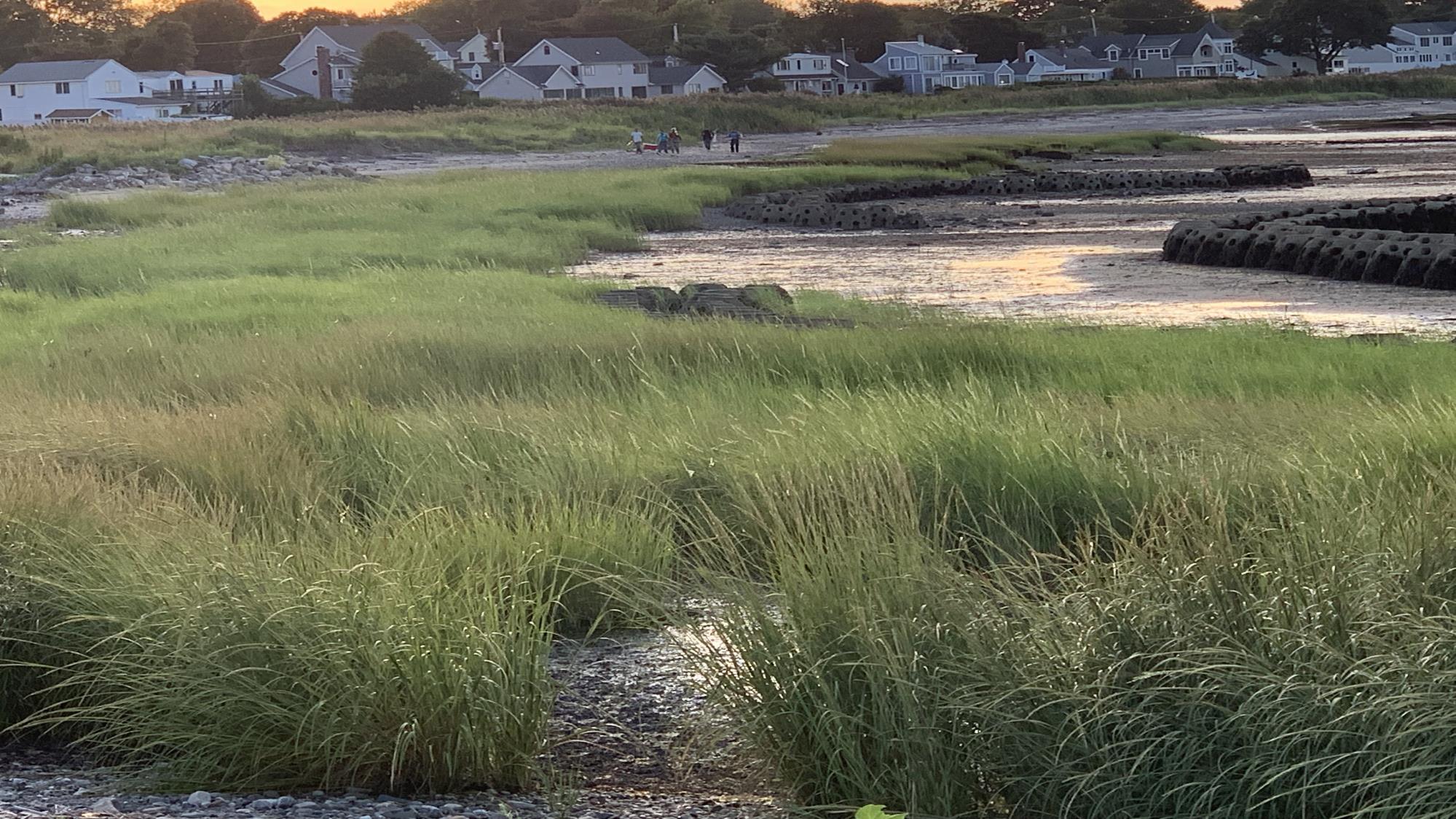
What is a living shoreline project? National Geographic defines it as a “way of managing coastal areas to protect, restore, or enhance the habitat” that can be “done through the placement of plants, stone, sand, and other materials.” In the case of the Stratford Point living shoreline project in Stratford, CT, concrete reef balls were placed in the water near the shoreline to mimic a natural reef. The reef balls have acted to reduce wave energy, which has allowed for sediment to increase and to help to prevent erosion. This in turn has helped efforts to reestablish salt marsh grasses, a beach dune, and other coastal habitats. The project, which is managed by Sacred Heart University, received early funding from the Long Island Sound Futures Fund. It was recently given a 2020 Best Restored Shore Award by the American Shore and Beach Preservation Association.
Story map Highlights Connecticut living shoreline projects

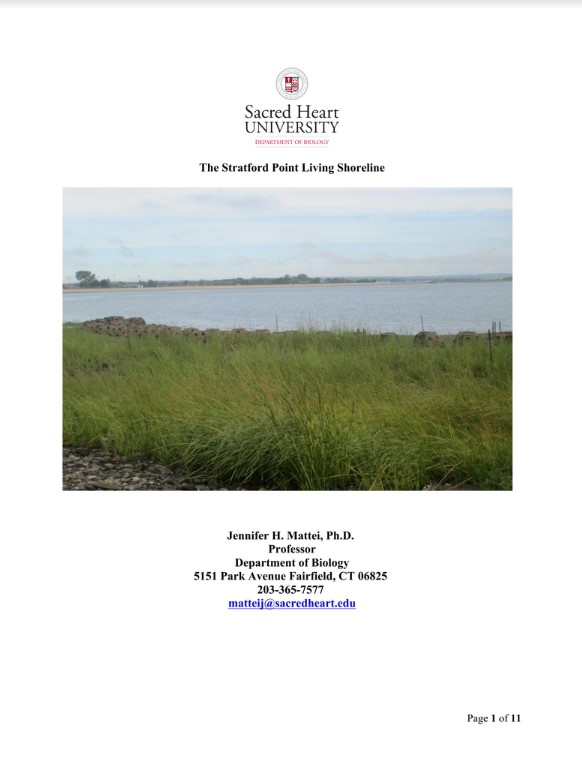
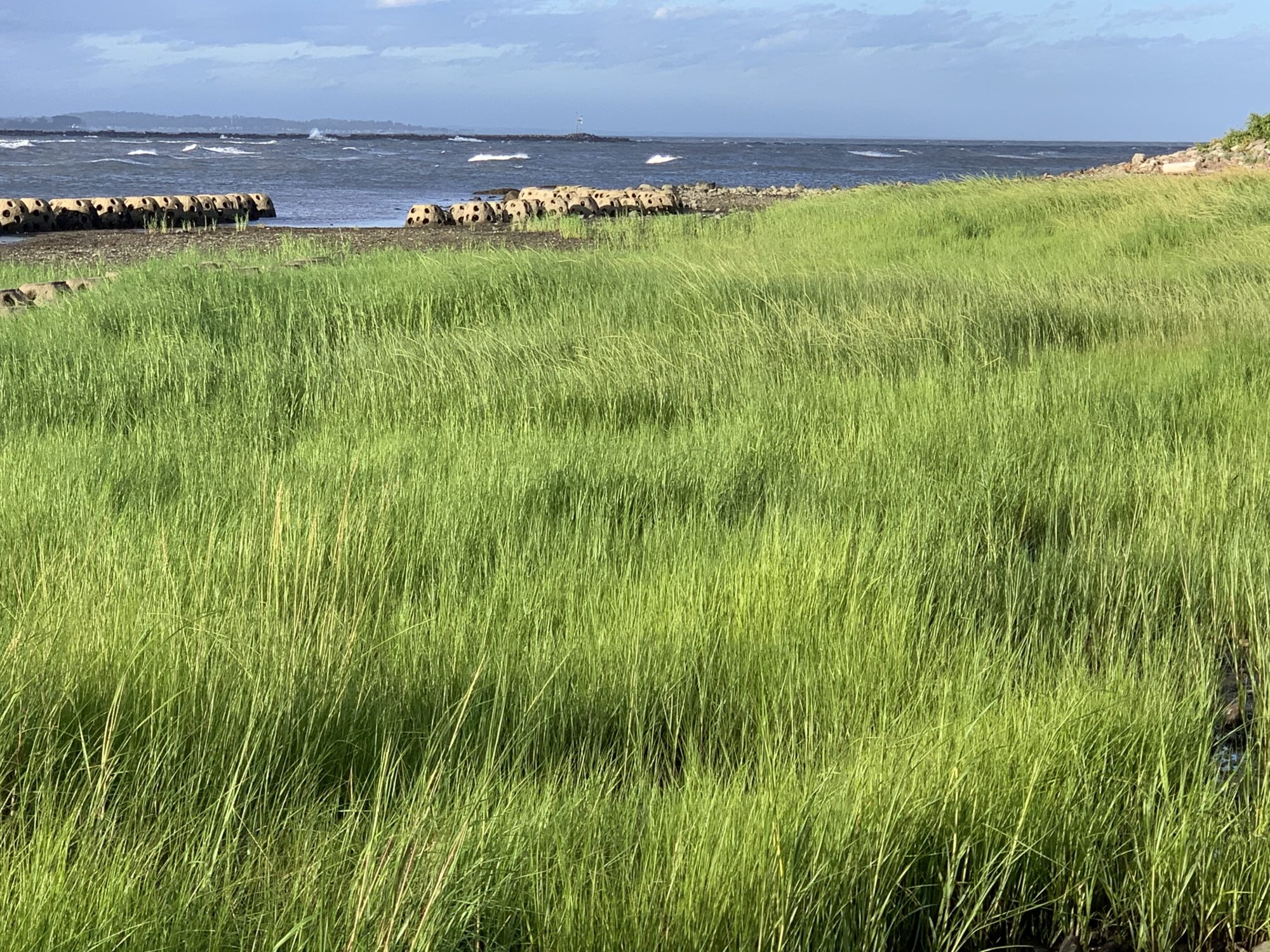
Area scientists and resource managers involved in the restoration of Long Island Sound are well represented in this year’s National Coastal and Estuarine Summit.
The Sept 29-Oct. 1 event, organized by Restore America’s Estuaries, is the largest international gathering of coastal professionals. More than 300 expert panels, presentations, and posters have been selected and more than 30 sponsors have already committed to support the Summit, which is being held virtually because of the pandemic.
The On-Demand sessions, recorded sessions that will continue to be available for nine months following the Summit, include several Long Island Sound-specific topics. They cover: a session moderated by Dr. Jim Ammerman, the Long Island Sound Science Coordinator, on monitoring nitrogen levels in Long Island Sound, and its embayments and tributaries; a session moderated by Katie O’Brien Clayton, an environmental analyst at the Connecticut Department of Energy and Environmental Protection, on emerging trends concerning hypoxia (depleted oxygen levels) in Long Island Sound; and Vicky O’Neill, the Long Island Sound Study’s New York Habitat Restoration and Stewardship Coordinator, on innovative methods to restore tidal wetlands.
Other Long Island Sound professionals at the Summit include:
- Dr. Jennifer Mattei, a biologist at Sacred Heart University, who is on a panel on: Design Challenges, Construction Shortcomings, and Growing Pains with Living Shorelines. Mattei’s project to create a living shoreline project at Stratford Point in Connecticut has received funding from the Long Island Sound Futures Fund.
- Holly Drinkuth, of The Nature Conservancy in Connecticut, who will be moderating a session on: Accelerating Adoption of Advanced Onsite Wastewater Treatment Technologies for Estuarine Recovery.
- Dr. Julie Rose, a NOAA scientist and Science and Technical Advisory Committee member, who is on a panel on: Emerging Tools and Approaches to Accelerate Coastal Ecosystem Restoration and Management.
- Brian Thompson, Director of CT DEEP’s Land and Resources division and a Long Island Sound Study Management Committee member, is on a panel on: Resilience Lessons Learned: Federal, State, and Local Coastal Managers Share Their Stories.
- Dr. Juliana Barrett, an extension educator at Connecticut Sea Grant and a member of the Long Island Sound Study Climate Change and Sentinel Monitoring work group, is on a panel on: Collaborative Programs to Enhance the Resilience of Communities and Ecosystems to Climate Change.
- Dr. Chris Elphick, a biologist at the University of Connecticut is on a panel on: Habitat Restoration for Estuarine-Dependent Birds. Dr. Elphick has received funding from the Long Island Sound Study for his research on protecting the saltmarsh sparrow and other estuarine-dependent birds along the Connecticut shoreline.
More information on these and other Summit topics, and information on how to register, is on the Restore America’s Estuaries website at: https://estuaries.org/summit/about/.
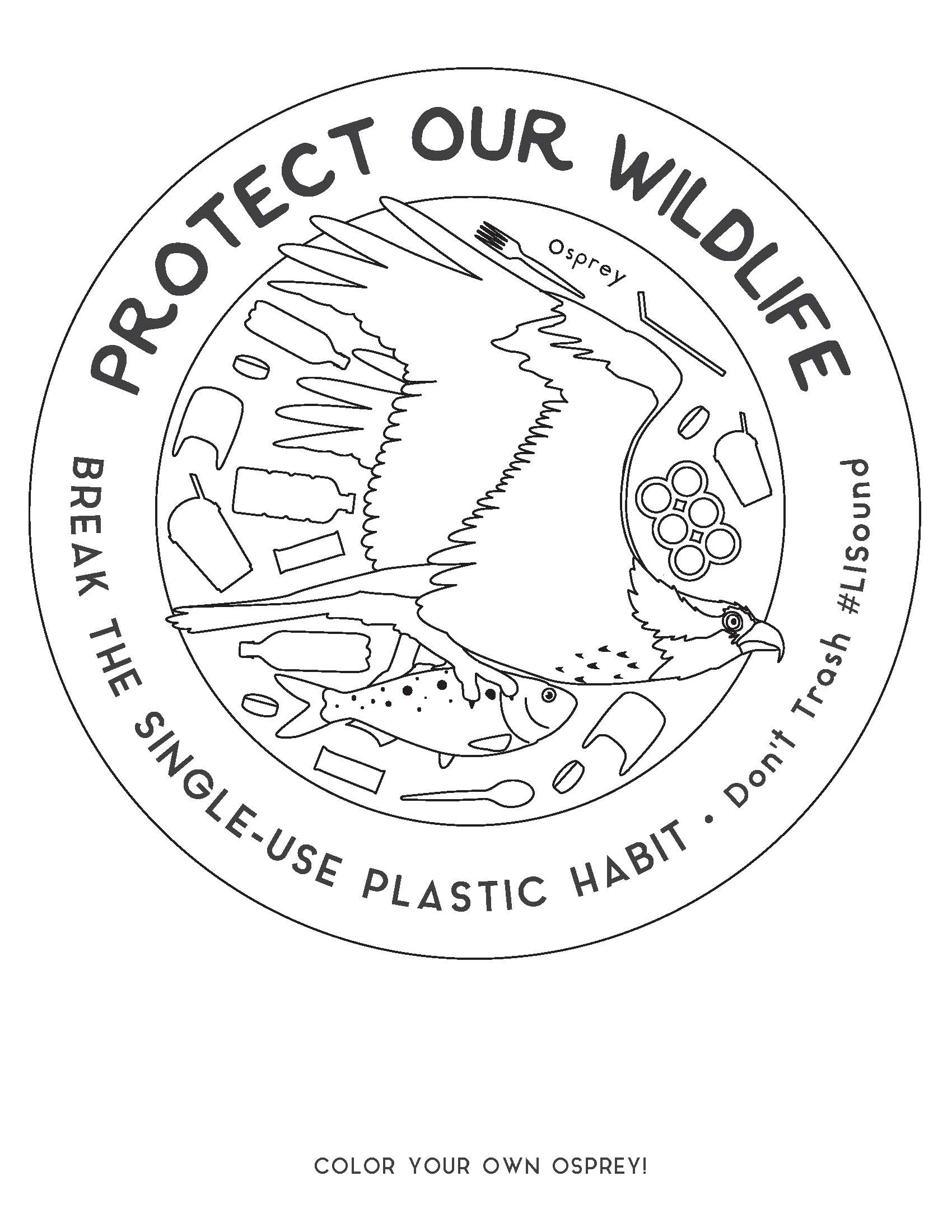
Tap or click the button below to download an activity booklet to color your own anemone or draw your own Long Island Sound animal from the #DontTrashLISound Protect Our Wildlife series.
Learn Here About the Osprey Comeback in Long Island Sound!
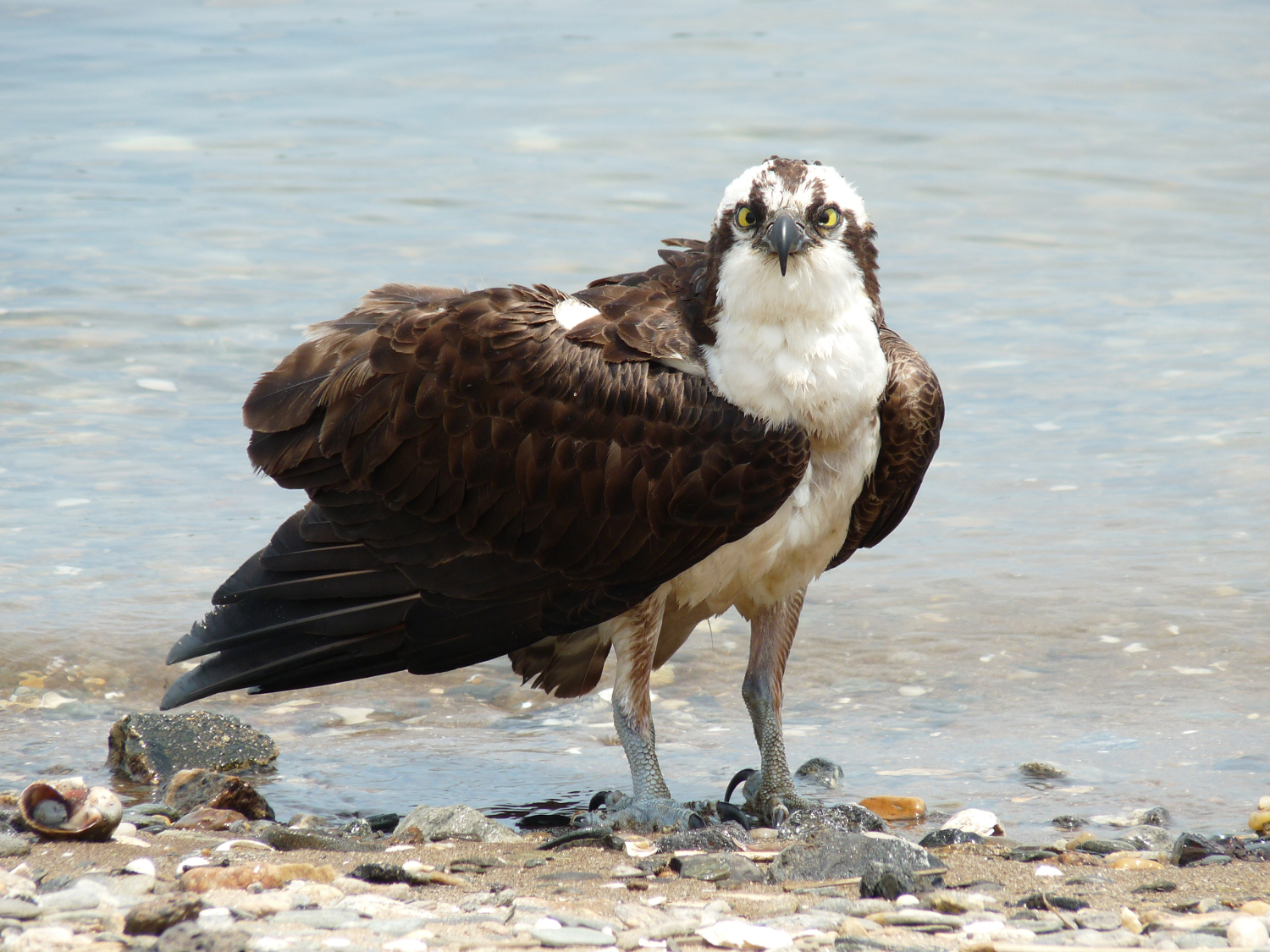
At many LISS Stewardship Sites, osprey can be seen flying overhead or perched in tall nesting platforms. These birds of prey are easy to recognize due to their large size and distinctively crooked wings, which can span six feet, but not long ago they were close to extinction in North America. Their prevalence today is a ringing success story.
Osprey exist throughout the world, feeding almost exclusively on fish (hence the alternate name “fish hawk”) and generally migrating south to nest during the winter. But their livelihood in North America was gravely imperiled in the mid-20th century, when pesticide use became rampant in the US. Starting in 1945, farmers began to widely use the pesticide DDT to protect their fields from insects. Little was known then about the environmental impact of spraying such chemicals indiscriminately through wildlife.
Exposure of this chemical devastated the osprey population. Through a process called biomagnification, animals higher up on the food chain face an exponential accumulation of the chemical that has been consumed by each level of wildlife below them. Birds of prey like osprey, bald eagles, and peregrine falcons became less able to absorb calcium and laid eggs with thinner shells that would break before hatching. Raptors typically only lay one to three eggs at a time, so this vulnerability had a sudden and dramatic impact. The species were listed as endangered by the 1970s, and many naturalists feared the extinction of osprey and bald eagles from New England entirely. In 1974 Connecticut’s osprey population was at an all-time low: only nine active nests.
But the modern environmentalist movement was born just in time. Rachel Carson’s classic Silent Spring, published in 1962, questioned the use of chemicals like DDT before understanding their greater ramifications. The large public outcry that followed led to the banning of DDT in 1972, often regarded as the first major success of modern environmentalism.
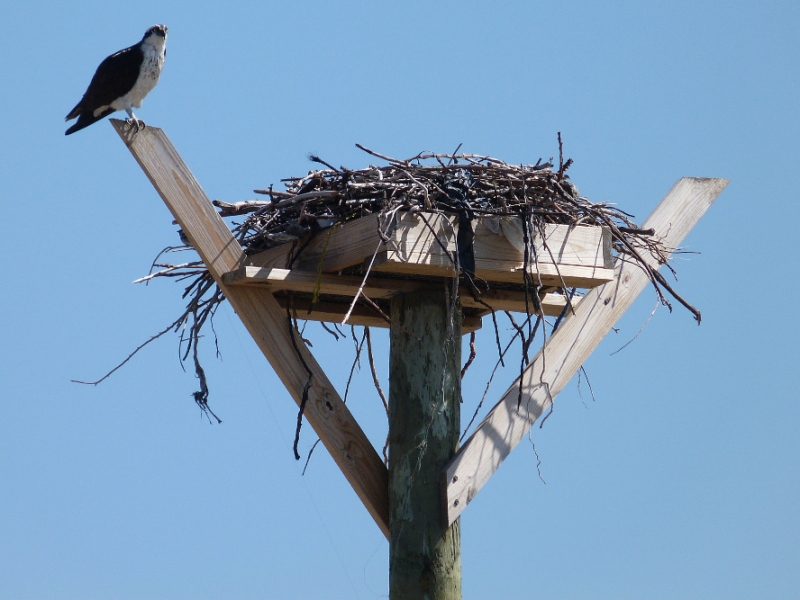
Osprey have since made an astounding comeback. Their numbers have climbed steadily and dramatically since the 1970s and they are no longer regarded as a threatened species. Thousands of osprey and bald eagles now nest throughout North America—their populations are at near-historic levels. Their tremendous resurgence is a testament to the power of activism even in the bleakest of conditions.
Naturalists have constructed osprey nesting platforms throughout New England at sites where natural nesting areas are sparse, which the birds have used readily. The Audubon Coastal Center at Milford Point seasonally streams a live webcam from inside one of its 18-foot nesting platforms, providing an up-close view of these striking birds as chicks and adults. The public is encouraged to visit the Coastal Center to explore its range of exhibits and programs on the Sound’s wildlife. Birdwatching is particularly exceptional—more than 300 species have been spotted there, and it is recognized by National Audubon Society as an Important Bird Area.
The prevalence of osprey at Stewardship Sites throughout the Sound is a reminder of the importance of being engaged in the conservation of our natural heritage. Each active nest is proof of our power to make lasting change.
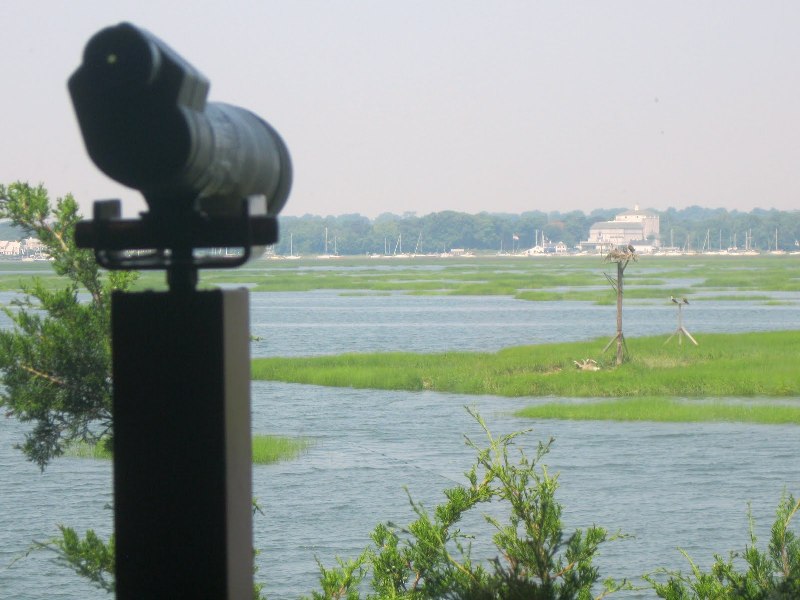
Learn More:
- Engage with the Connecticut Audubon Society’s Coastal Center at Milford Point to learn more about osprey and New England’s other birds and wildlife.
- Read more about osprey from Audubon’s species overview or CT DEEP’s fact sheet.